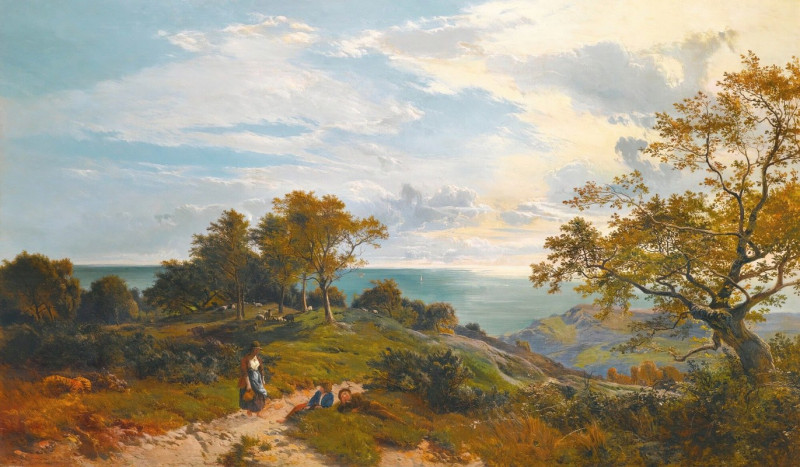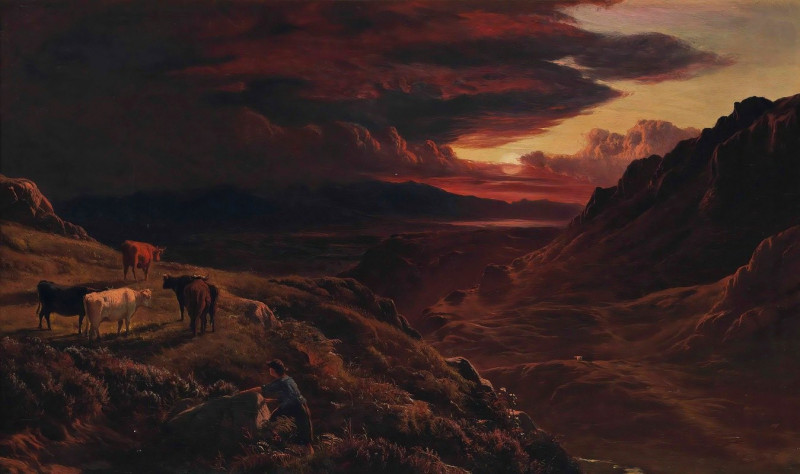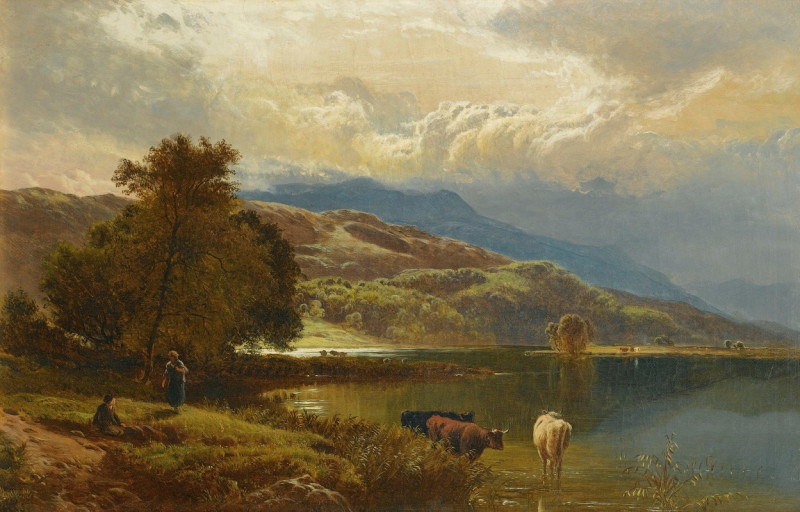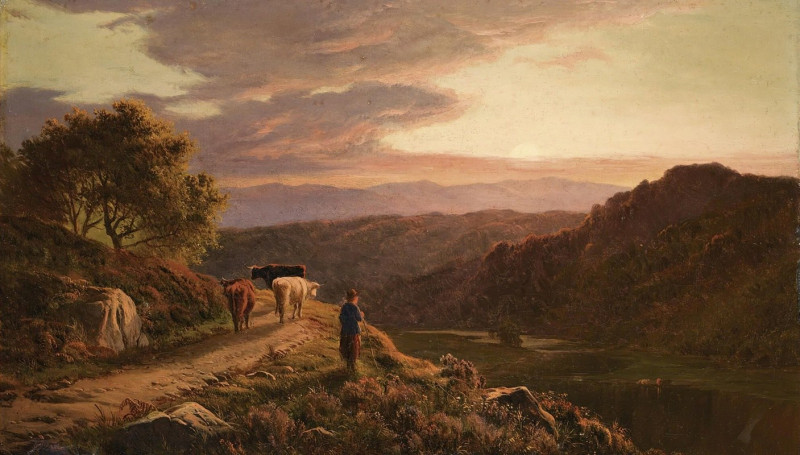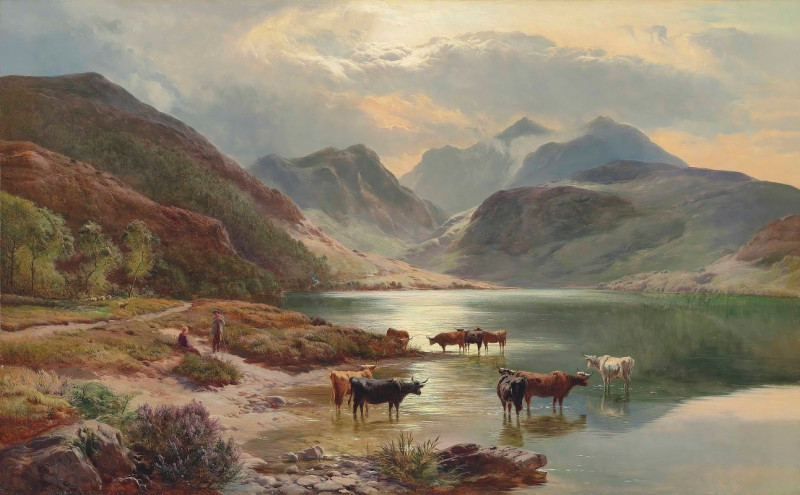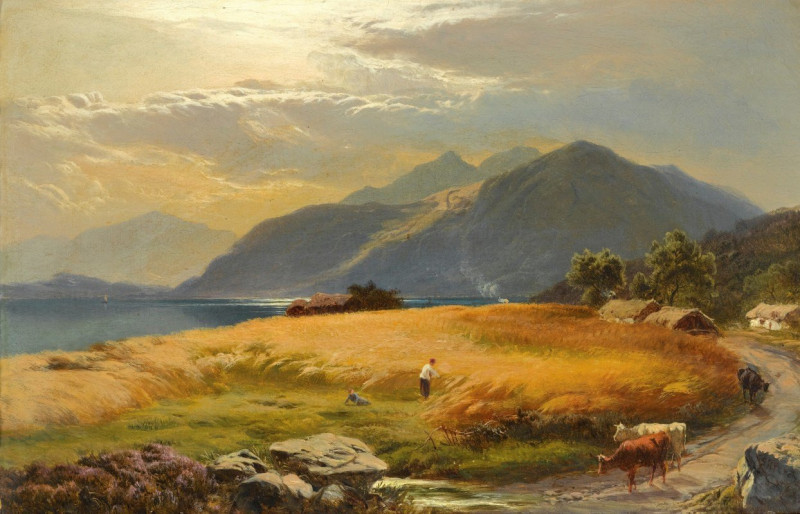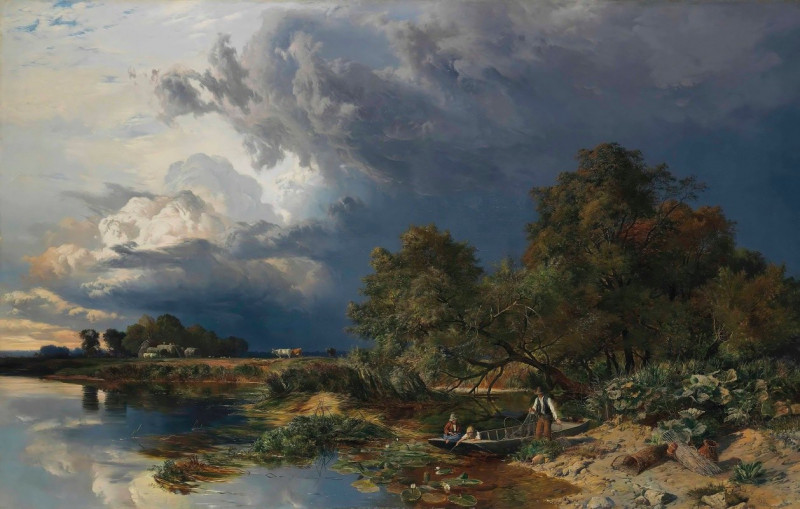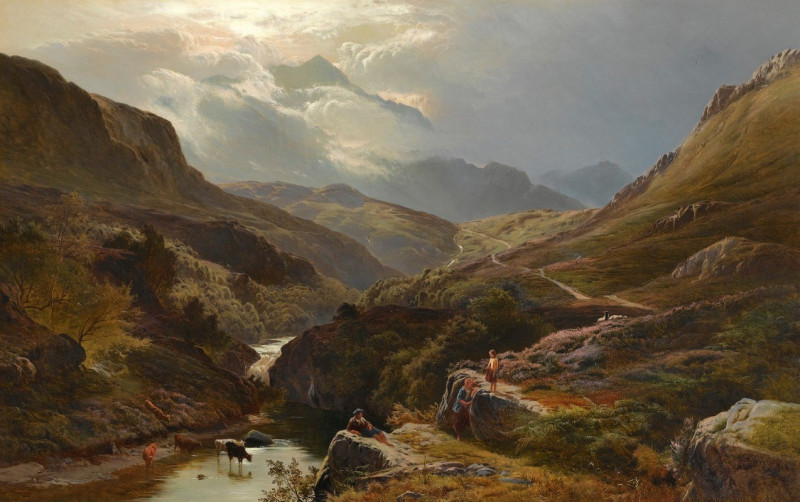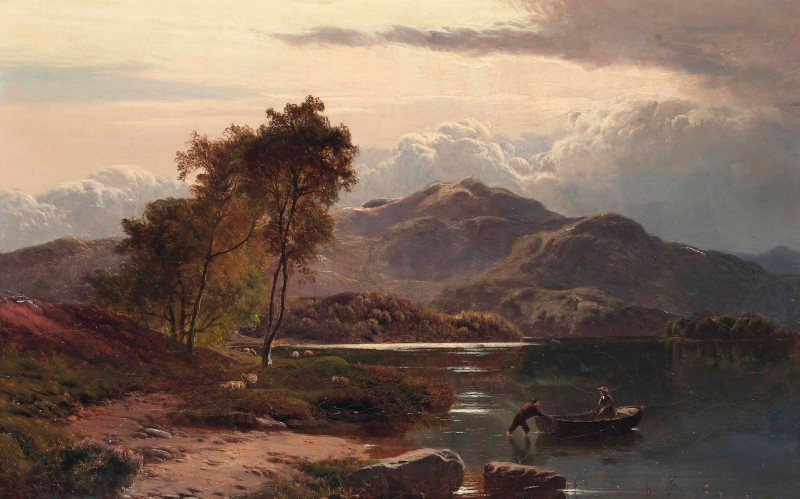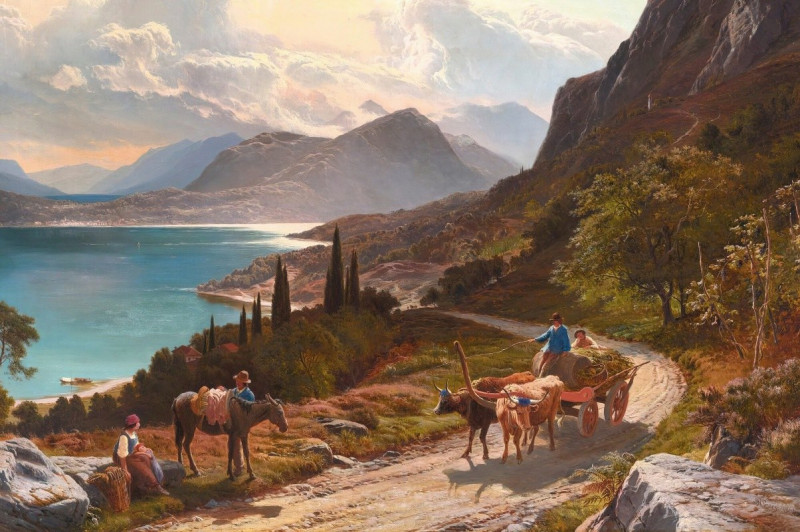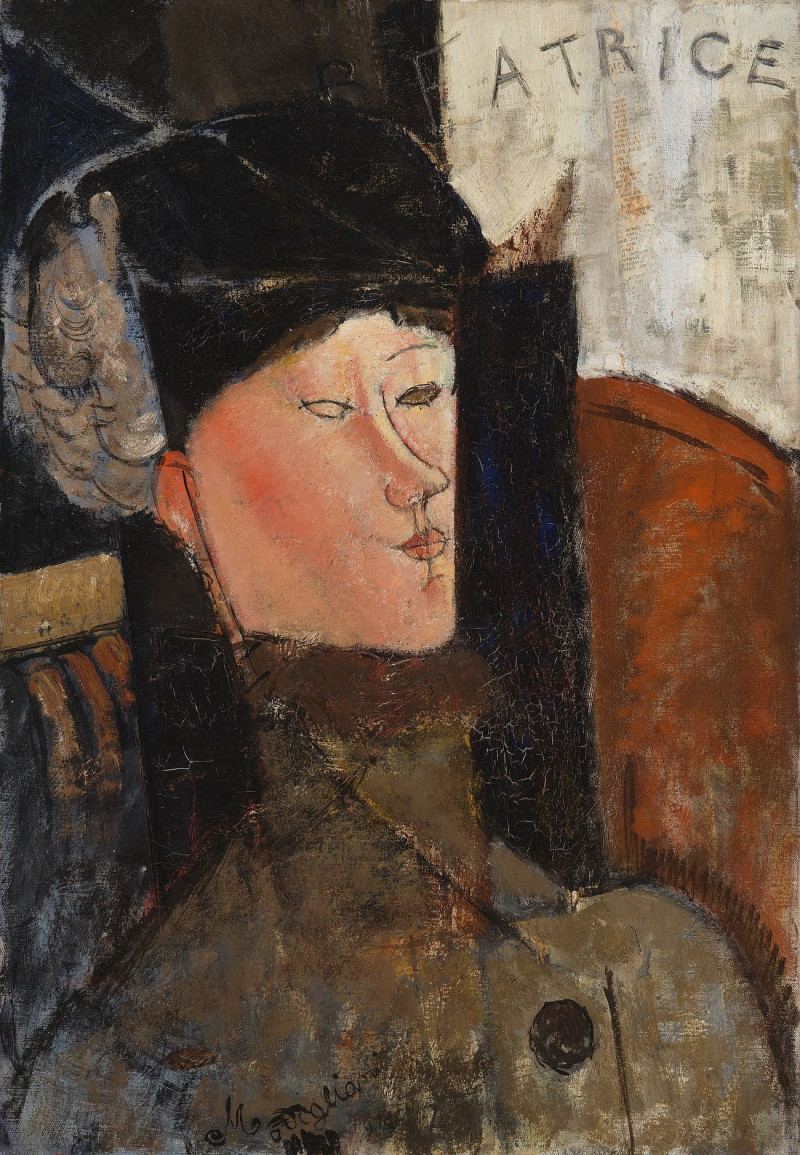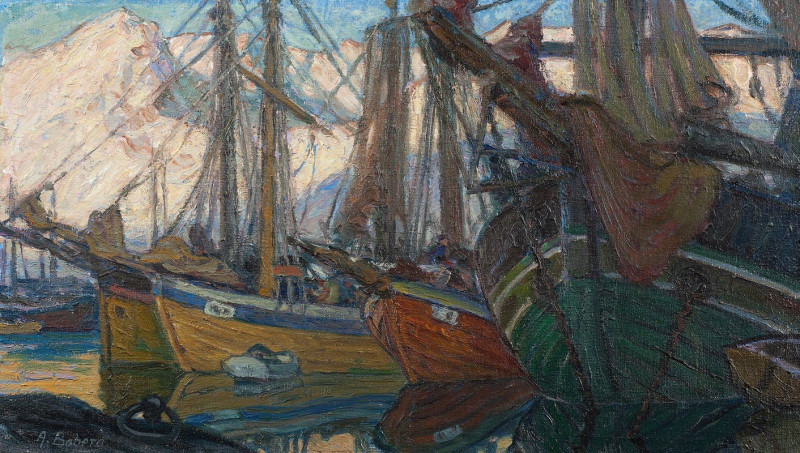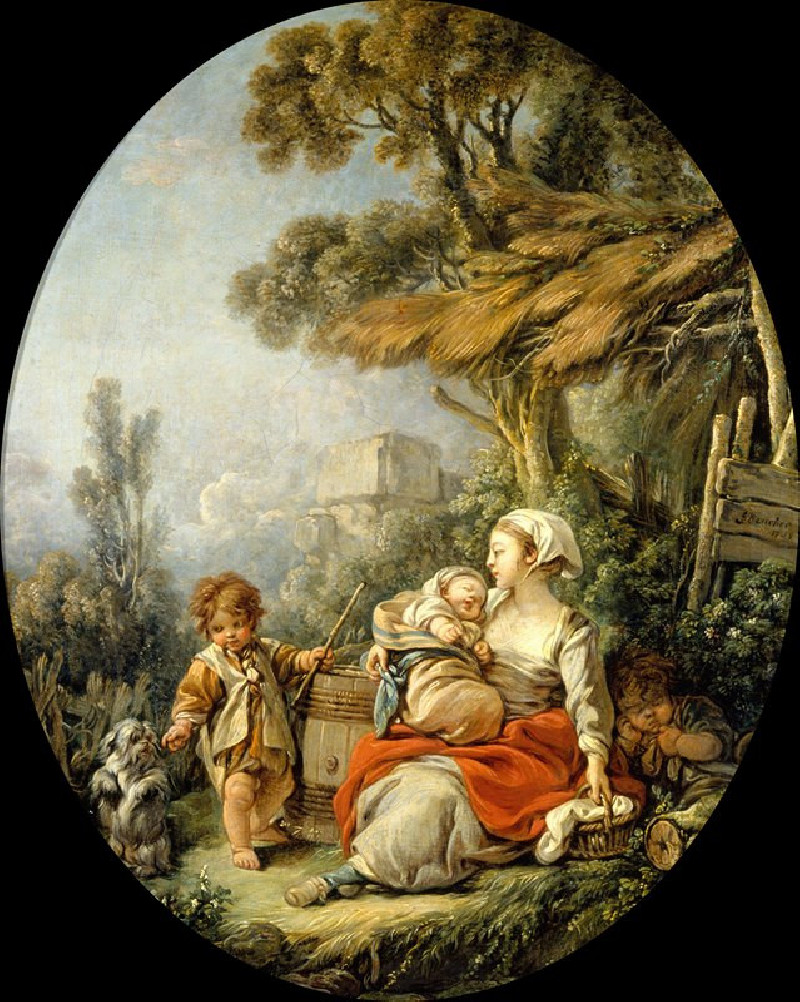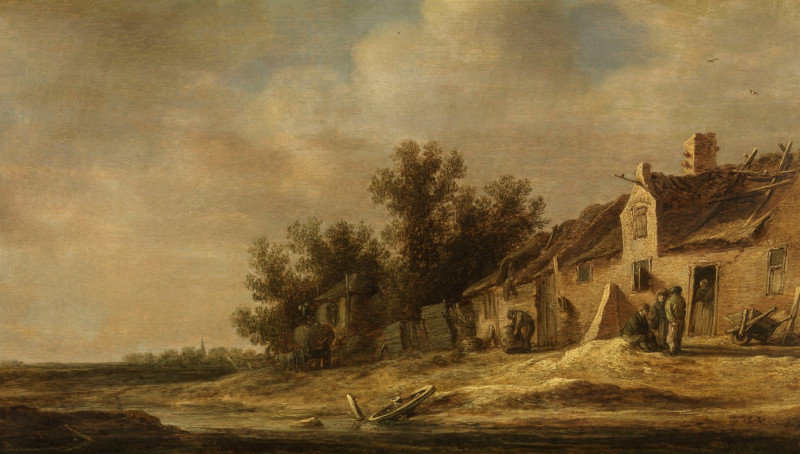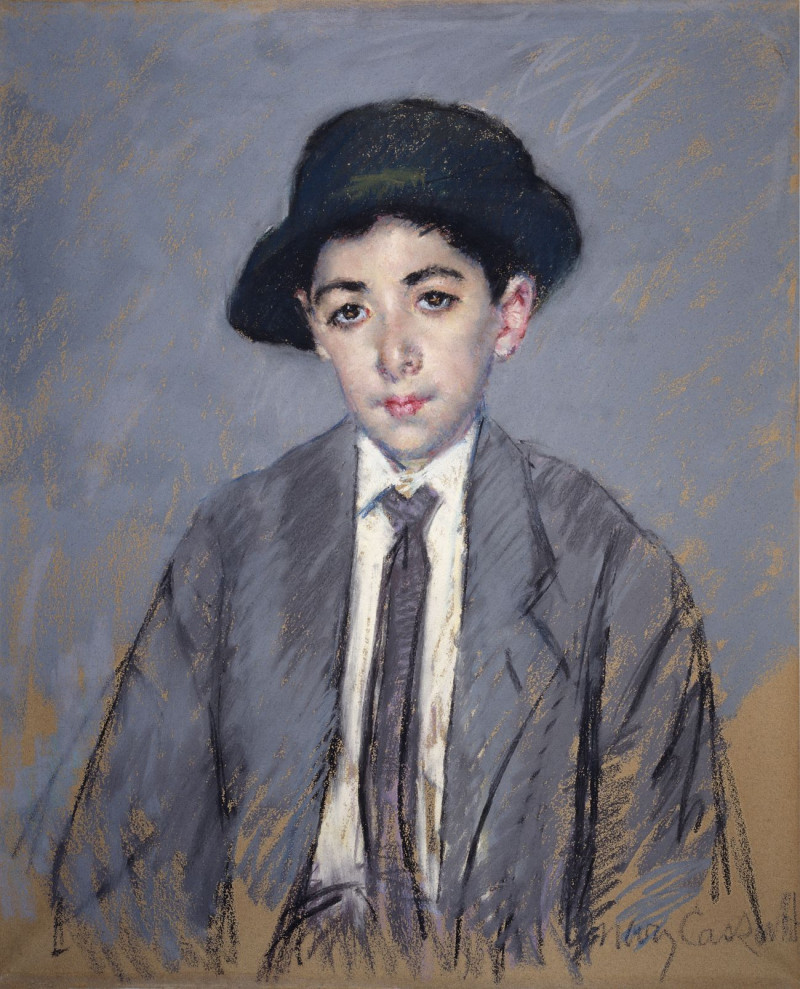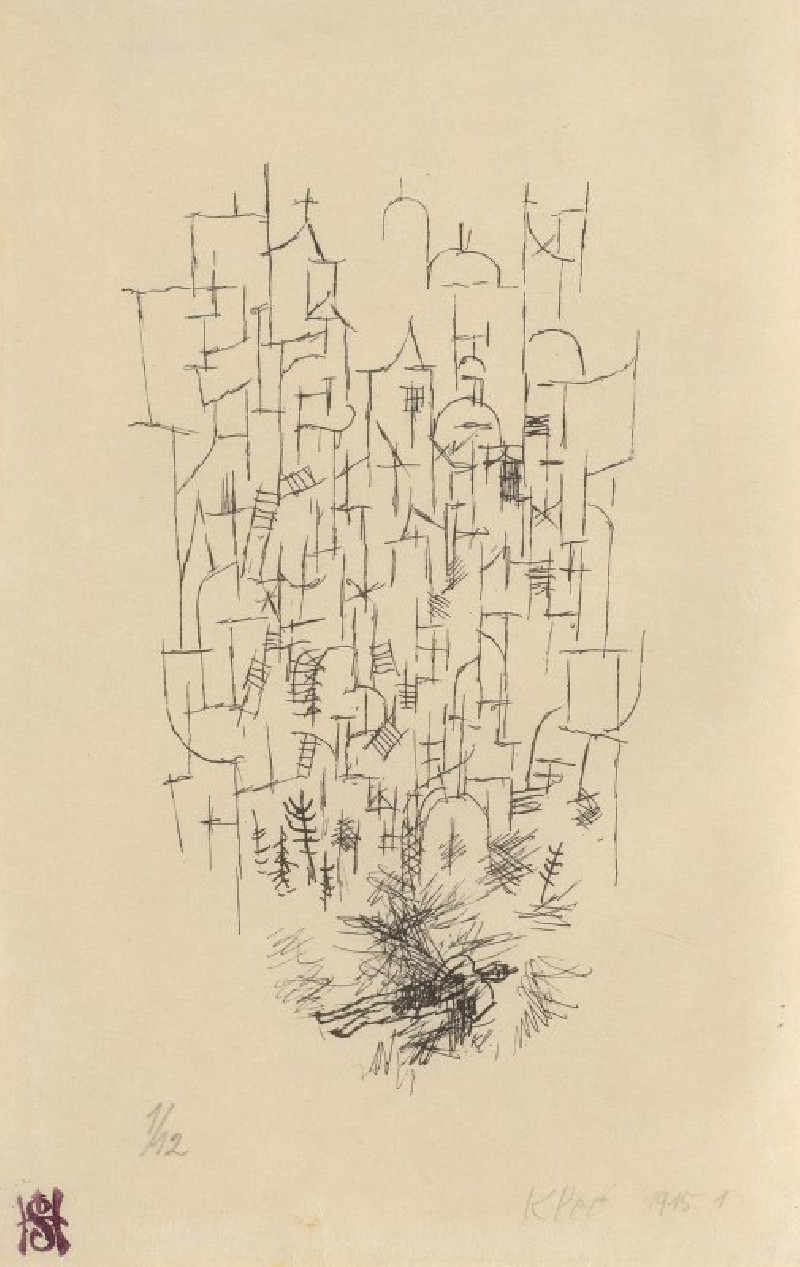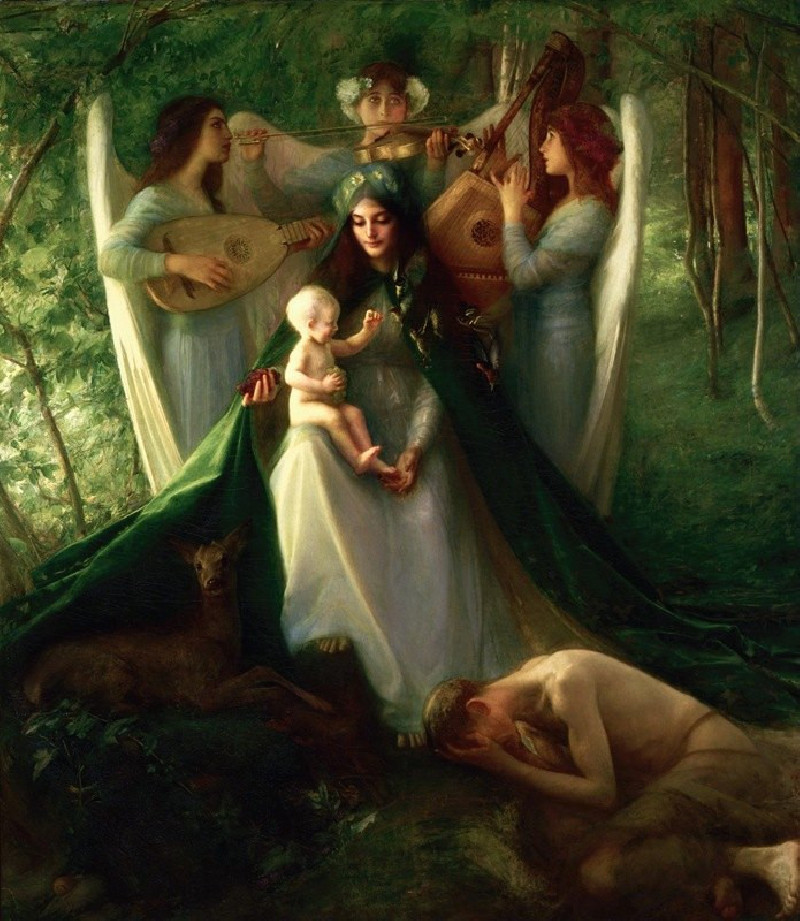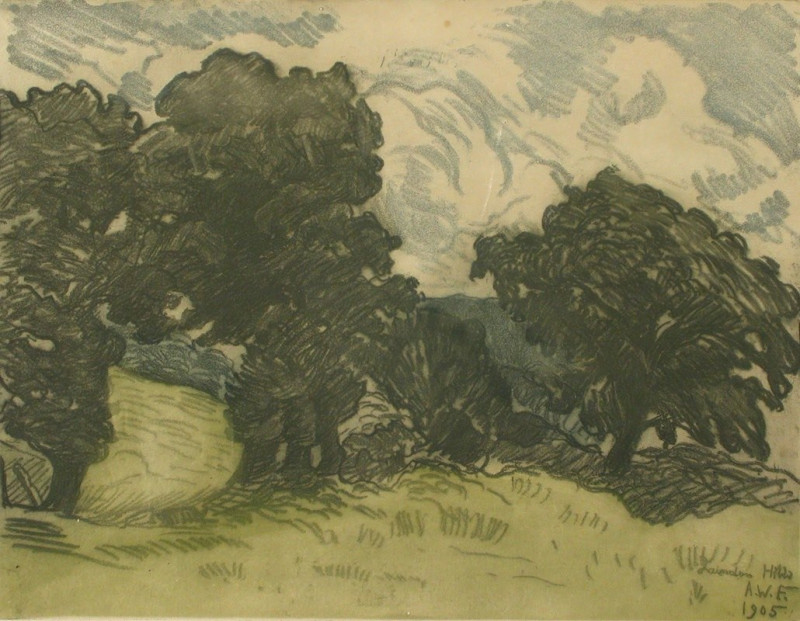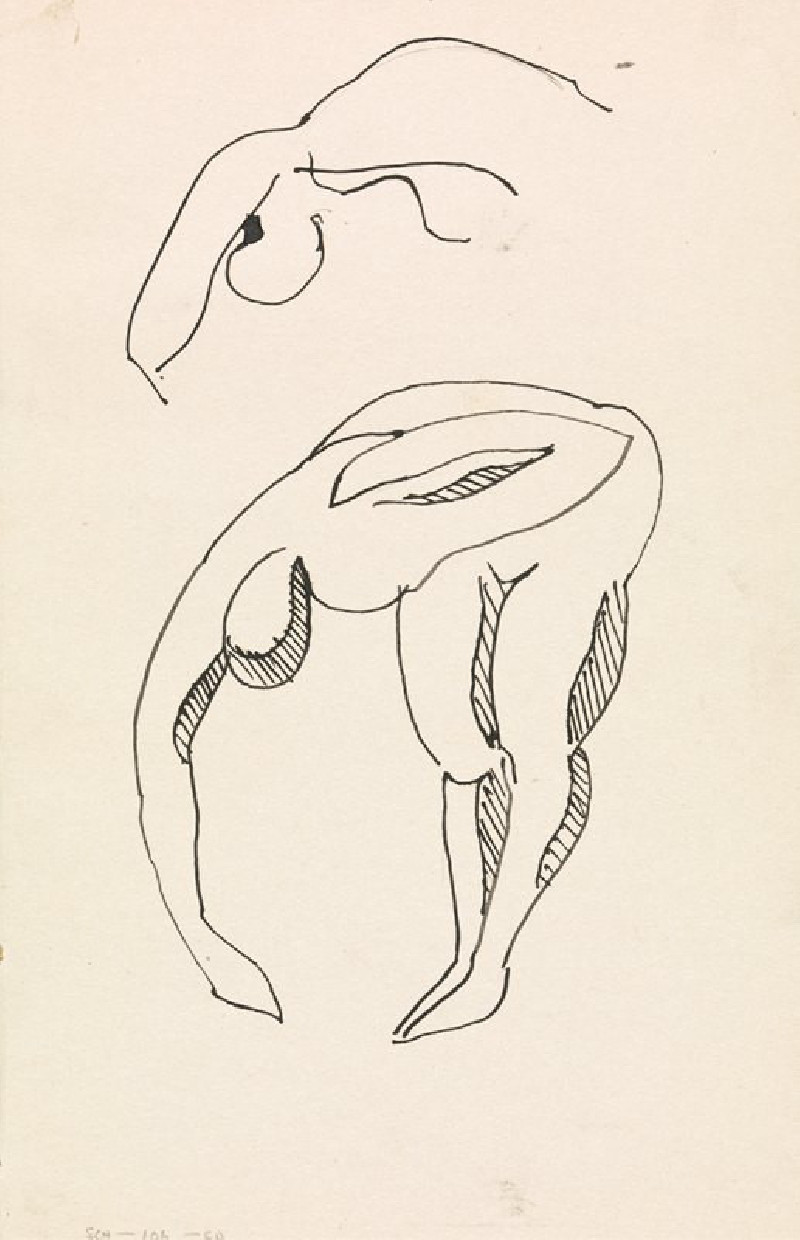A Peep At The Sea, Fairlight Glen (1859)
Technique: Giclée quality print
Recommended by our customers
More about this artwork
This breathtaking painting invites viewers to step into a serene natural landscape that beautifully captures the essence of Victorian-era British countryside with a delightful glimpse of the sea. "A Peep at the Sea, Fairlight Glen," painted in 1859 by celebrated landscape artist Sidney Richard Percy, is renowned for its detailed and evocative portrayal of rural England.The painting depicts a tranquil scene set in Fairlight Glen, near Hastings, with a stunning view extending towards the English Channel. The foreground features a winding path, leading the viewer's eye through a variety of richly textured foliage and into a serene pastoral vista. Three figures can be seen enjoying the peaceful environment: one stands while two others rest by the wayside, suggesting a moment of leisure and appreciation for nature's beauty.The right portion of the canvas is dominated by a robust tree, its branches sprawling outwards, capturing the warm sunlight that bathes the entire scene. The soft, glowing light suggests a late afternoon where the play between light and shadow creates a sense of depth and vibrancy.In the distance, the calm sea merges with a delicate sky, painted with gentle, wispy clouds, creating a harmonious connection between sea and sky. This distant view offers a 'peep' at the vast and open sea, adding a sense of mystery and infinity to the otherwise enclosed countryside scene."A Peep at the Sea, Fairlight Glen" is not only a display of Percy's skill in capturing the British landscape but also an invitation to reflect on the peace and timeless beauty found in nature.
Delivery
Returns
Sidney Richard Percy was an English landscape painter during the Victorian era, and a member of the Williams family of painters.
Sidney Richard Percy was born Sidney Richard Percy Williams on 22 March 1822 in London. He was the fifth son of the painter Edward Williams (1781–1855) and Ann Hildebrandt (c.1780-1851), and a member of the Williams family of painters, who were related to such famous artists as James Ward, R.A. and George Morland.

